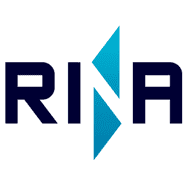
EU REACH: Five New SVHC Additions

This blog was originally posted on 29th January, 2024. Further regulatory developments may have occurred after publication. To keep up-to-date with the latest compliance news, sign up to our newsletter.
AUTHORED BY TONY LORD, SENIOR REGULATORY CONSULTANT, RINA
Introduction
REACH is EU’s Regulation (EC) No 1907/2006 concerning the Registration, Evaluation, Authorisation and Restriction of Chemicals (REACH). It was enacted to ensure a high level of protection of human health and the environment, including the promotion of alternative methods for assessment of hazards of substances, as well as the free circulation of substances on the internal market while enhancing competitiveness and innovation.
The regulation has an impact on most companies across the EU, as well as affecting manufacturers exporting components to manufacturers based in the EU. Therefore it is vital for businesses to stay on top of this regulation.
In this blog, we examine the new substances added to the Candidate List. For more information on REACH check out ‘REACH Substances Restrictions in Articles: 2023 Roundup’ or visit our blog.
Candidate List of Substances of Very High Concern (SVHC): New Additions
Five substances have been added to the Candidate List of Substances of Very High Concern (SVHC) in the Registration, Evaluation, Authorisation and Restriction of Chemicals (REACH) Regulation1.
SVHCs are subject to reporting and sometimes notification where present in articles, so it is instructive to consider where they might be found:
- 2-(2H-benzotriazol-2-yl)-4-(1,1,3,3-tetramethylbutyl)phenol; Octrizole (UV-329) CAS number 3147-75-9 (Tinuvin 329) is a member of the hydroxyphenyl benzotriazole type of UV light stabiliser, typically added up to 1 % w/w in a range of polymers including polycarbonate and polyvinyl chloride (PVC). It preserves the appearance and physical integrity and performance of the polymer, protecting against embrittlement and outdoor weathering in films, sheets and fibres.
- 2-(2′-hydroxy -3′ -tert-butyl-5′-methylphenyl)-5-chloro benzotriazole; Bumetrizole (UV-326) CAS number 3896-11- 5 (Tinuvin 326) is another UV light absorber of the hydroxyphenyl benzotriazole type. It is used in polymers such as polyolefins (polyethylene, polypropylene, and polybutene) and polyester, typically in concentrations up to 0.5% w/w.
- 2,4,6-tri-tert-butylphenol; phenol, 2,4,6-tris(1,1-dimethylethyl); (2,4,6-TTBP) CAS number 732-26-3. There is uncertainty over the sources and exact industrial use of 2,4,6-TTBP. Uses include, as an intermediate in the production of antioxidant polymer stabiliser additives, a by-product in the manufacture of 4-tertiary-butylphenol, a lubricating agent in the transport sector and an additive in gasoline. Its ability to act as a free radical scavenger conveys properties that are useful in these applications. It may occur as unintentional contamination (at ppm levels) in polymers as a result of these industrial uses. It may also occur in polymers where a hindered phenol type antioxidant has been used and concentrations might then possibly exceed the 0.1 % w/w limit.
- 2-(dimethylamino)-2-[(4-methylphenyl)methyl]-1-[4-(morpholin-4-yl)phenyl]butan-1-one; (Irgacure 379) CAS number 119344-86-4 is a photoinitiator used in Ultraviolet Light (UV) cured inks, coatings and adhesives, typically added up to 5 % w/w in the wet formulation. Irgacure 379 is consumed during the curing process to leave trace level amounts (parts per million) and therefore would not be expected in the final article above the 0.1 % w/w limit.
- Oligomerisation and alkylation reaction products of 2-phenylpropene and phenol (OAPP). The mixture is used in adhesives, sealants, coatings, inks, toners and polymers. The mixture is sometimes referred to as methylstyrenated phenol (MSP) CAS 68512-30-12 . The most significant components of the mixture are expected to be a phenol with 1 to 3 methylstyrenated substituents, and dimers and trimers of the C9 monomer (2-phenylpropene)3. The proportions of these components can vary in commercially manufactured mixtures under the same CAS number. The complex and variable nature of the mixture means that it could be difficult to correctly identify the presence of the mixture in polymers. Accurate quantification could also be difficult, particularly if a suitable calibration material is not available. In addition, some of the components of the mixture such as styrene dimers and trimers may be present from substances not related to the use of the mixture as styrene-based polymers are extensively used. The mixture is a polymeric material often used as a synthetic resin. Its use in components such as inks and adhesives is not likely to result in concentrations above the 0.1 % w/w for most articles. However, it is mostly likely to be used in synthetic rubbers as an antioxidant and a stabiliser in polyurethane foams and when used it will result in it being above 0.1 % in the article.
REACH requires that suppliers of articles that contain >0.1% of an SVHC must inform the recipient that the article contains an SVHC giving the name of the substance and any safe use information if necessary. SVHCs are also candidates for further regulation and may be added to the list of substances requiring approval to be used in the EU. Under the Waste Framework Directive, companies also have to notify ECHA if the articles they produce contain substances of very high concern in a
concentration above 0.1 % (weight by weight). This notification is published in ECHA’s database of substances of concern in products (SCIP).
It is worthwhile noting that none of these substances, nor any of the substances added to EU REACH since the UK exited the EU, have been added to the UK REACH candidate list which still stands at 209 while the EU list has now reached a total of 240 substances. This highlights the continuing divergence between the obligations under UK REACH and EU REACH.
References
- https://echa.europa.eu/-/echa-adds-five-hazardous-chemicals-to-the-candidate-list ↩︎
- https://echa.europa.eu/substance-information/-/substanceinfo/100.064.495 ↩︎
- https://www.canada.ca/content/dam/eccc/documents/pdf/pded/phenol-methylstyrenated/draft-screening-assessment-phenol-methylstyrenated.pdf ↩︎
Author

Tony Lord, Senior Regulatory Consultant, RINA
He can be contacted at: antony.lord@rina.org
Never Miss A Regulatory Update!
Join 50,000 compliance professionals for monthly updates on hot compliance issues, free regulatory webinars and whitepapers and market insights on the latest trends


